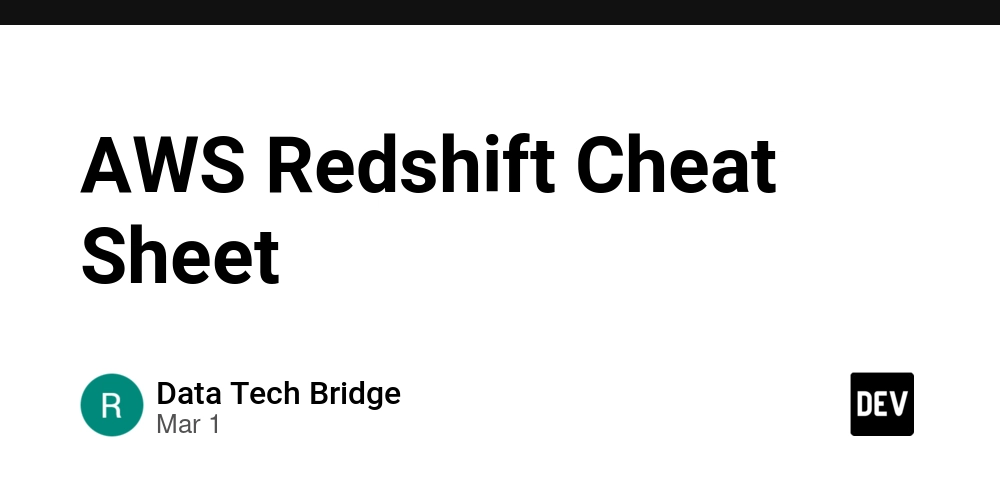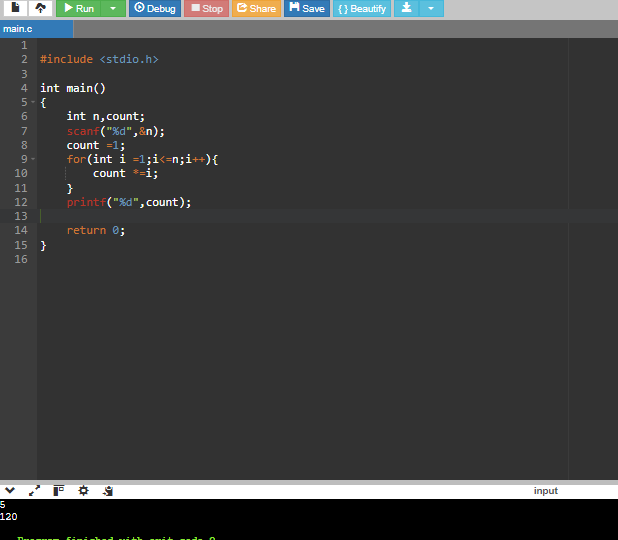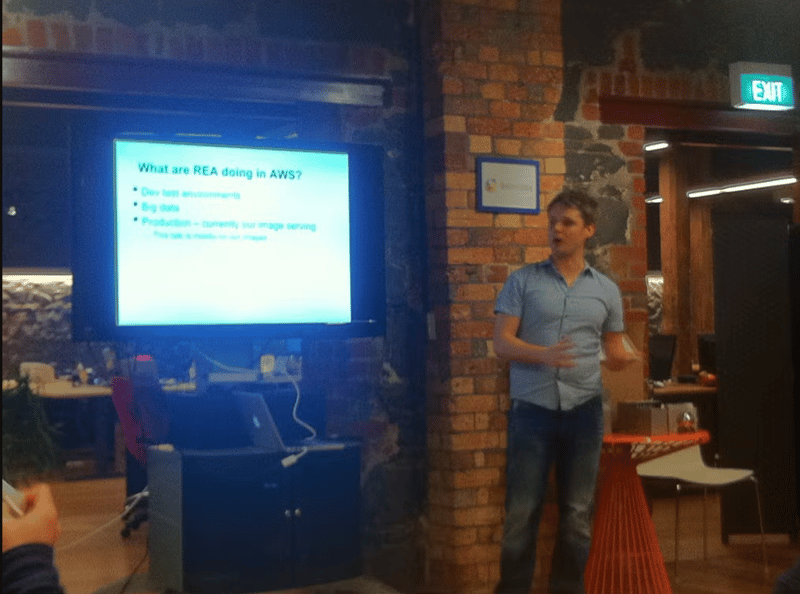AWS Redshift Cheat Sheet for AWS Certified Data Engineer - Associate (DEA-C01)
Core Concepts and Building Blocks
Amazon Redshift is a fully managed, petabyte-scale data warehouse service in the cloud. It's designed for high performance analytics and business intelligence workloads.
Key Components:
-
Clusters: Collection of computing resources called nodes
-
Nodes: Individual compute units that process queries
-
Leader Node: Manages client connections and query planning
-
Compute Nodes: Execute queries and store data
-
Slices: Partitions of compute nodes where data is stored
-
Databases: Collections of tables
-
Workload Management (WLM): Controls query prioritization and resource allocation
-
Redshift Spectrum: Query data directly from S3 without loading
-
Concurrency Scaling: Automatically adds cluster capacity to handle increased demand
Redshift Architecture Mind Map
Amazon Redshift
├── Cluster Architecture
│ ├── Leader Node
│ │ ├── Query Planning
│ │ ├── Result Aggregation
│ │ └── Client Connection Management
│ └── Compute Nodes
│ ├── Data Storage
│ ├── Query Execution
│ └── Slices (Data Partitions)
├── Data Storage
│ ├── Columnar Storage
│ ├── Zone Maps
│ ├── Data Compression
│ └── Data Distribution
│ ├── Even Distribution
│ ├── Key Distribution
│ └── All Distribution
├── Query Processing
│ ├── MPP Architecture
│ ├── Query Optimization
│ └── Result Caching
└── Management Features
├── Workload Management (WLM)
├── Concurrency Scaling
├── AQUA (Advanced Query Accelerator)
├── Redshift Spectrum
└── Automatic Table Optimization
Node Types and Specifications
| Node Type |
vCPU |
Memory |
Storage |
I/O |
Use Case |
| RA3 Nodes |
|
|
|
|
|
| ra3.16xlarge |
48 |
384 GB |
Managed |
4x |
Large data warehouses |
| ra3.4xlarge |
12 |
96 GB |
Managed |
2x |
Medium data warehouses |
| ra3.xlplus |
4 |
32 GB |
Managed |
1.5x |
Small data warehouses |
| DC2 Nodes |
|
|
|
|
|
| dc2.8xlarge |
32 |
244 GB |
2.56 TB SSD |
High |
Compute-intensive workloads |
| dc2.large |
2 |
15 GB |
160 GB SSD |
Moderate |
Small data warehouses |
| Serverless |
|
|
|
|
|
| Serverless |
Auto-scaling |
Auto-scaling |
Managed |
Varies |
Unpredictable workloads |
Redshift Features and Details
| Feature |
Description |
Limits/Notes |
| Maximum Cluster Size |
Up to 128 nodes (RA3) |
Single-node clusters available for dev/test |
| Maximum Storage |
Up to 8 PB with RA3 nodes using Redshift Managed Storage |
Scales automatically |
| Maximum Table Size |
Unlimited with Spectrum |
Limited by cluster storage for local tables |
| Maximum Row Size |
4 MB |
- |
| Maximum Columns per Table |
1,600 |
- |
| Maximum Tables per Cluster |
Thousands |
Depends on complexity |
| Maximum Concurrent Queries |
50 by default |
Can be increased with concurrency scaling |
| Maximum Concurrent Connections |
500 |
- |
| Maximum Database Size |
Unlimited with Spectrum |
Limited by cluster storage for local data |
| Backup Retention |
1-35 days for automated snapshots |
Manual snapshots don't expire |
| Query Timeout |
Default 1 hour |
Configurable |
| Maintenance Window |
30-minute window once per week |
Configurable |
| Encryption |
At-rest and in-transit |
KMS or HSM |
| VPC Support |
Yes |
Enhanced VPC routing available |
| Cross-Region Snapshots |
Yes |
For disaster recovery |
| Elastic Resize |
Add/remove nodes in minutes |
Limited to same node type |
| Classic Resize |
Change node types |
Takes longer than elastic resize |
| Concurrency Scaling |
Auto-scales read capacity |
Charged by usage (1 free hour per day) |
| AQUA |
Hardware-accelerated cache |
Available for RA3 nodes |
| Federated Query |
Query across databases |
PostgreSQL and Aurora PostgreSQL |
Data Distribution Styles
| Distribution Style |
Description |
Best For |
Performance Impact |
| AUTO |
Redshift assigns optimal distribution |
General use |
Good for most cases |
| EVEN |
Rows distributed evenly across slices |
Tables without clear join key |
Balanced storage, potential data movement during joins |
| KEY |
Rows with same values in distribution column on same slice |
Join tables on distribution key |
Minimizes data movement during joins |
| ALL |
Full copy of table on every node |
Small dimension tables |
Fast joins but storage overhead |
Sort Keys
| Sort Key Type |
Description |
Best For |
Performance Impact |
| Compound |
Sort by column order (like a phone book) |
Range-restricted scans on sort columns |
Excellent for queries filtering on prefix of sort key |
| Interleaved |
Equal weight to each sort column |
Queries with predicates on different columns |
Better for varied query patterns |
| Automatic |
Redshift chooses optimal sort key |
General use |
Good for most cases |
Compression Encodings
| Encoding |
Best For |
Compression Ratio |
Performance Impact |
| RAW |
Binary data, already compressed |
None |
Baseline |
| AZ64 |
Numeric data |
Good |
Fast computation |
| BYTEDICT |
Limited distinct values |
Very high |
Fast for small domains |
| DELTA |
Incremental numeric data |
High |
Good for dates, timestamps |
| LZO |
Very large text columns |
Moderate |
Good general purpose |
| ZSTD |
Varied data types |
High |
Good general purpose, better than LZO |
| RUNLENGTH |
Repeated values |
Very high |
Excellent for low-cardinality columns |
| TEXT255/TEXT32K |
Variable-length strings |
High |
Good for text |
Important Redshift Limits and Performance Factors
- Maximum of 500 concurrent connections per cluster
- Default query timeout is 1 hour (configurable)
- Maximum of 50 concurrent queries by default
- Maximum of 100 databases per cluster
- Maximum of 9,900 schemas per database
- Maximum of 200,000 tables per cluster (including temporary tables)
- Maximum row size is 4 MB
- Maximum column name length is 127 bytes
- Maximum 1,600 columns per table
- Maximum identifier length is 127 bytes
- Maximum SQL statement size is 16 MB
Query Performance Optimization
- Use COPY command for bulk data loading (8-10x faster than INSERT)
- Choose appropriate distribution keys to minimize data movement
- Use sort keys for columns frequently used in WHERE clauses
- Vacuum regularly to reclaim space and resort data
- Analyze tables to update statistics for the query planner
- Use appropriate compression encodings for columns
- Avoid SELECT * and retrieve only needed columns
- Use UNLOAD to export large result sets to S3
- Implement proper partitioning when using Redshift Spectrum
- Use materialized views for common, complex queries
Data Loading Best Practices
- Use COPY command from S3, not INSERT statements
- Split large files into multiple files (1-128 MB each)
- Use gzip compression for load files
- Load data in parallel using multiple files
- Use a manifest file to ensure all files are loaded
- Use STATUPDATE ON to update statistics after loading
- Use COMPUPDATE ON for automatic compression analysis
- Temporarily disable automatic compression for very large loads
- Use a single COPY transaction for related tables
- Example COPY command:
COPY customer
FROM 's3://mybucket/customer/data/'
IAM_ROLE 'arn:aws:iam::0123456789012:role/MyRedshiftRole'
DELIMITER '|' REGION 'us-west-2'
GZIP COMPUPDATE ON;
Workload Management (WLM)
- Automatic WLM: Redshift manages query queues and memory allocation
- Manual WLM: Define up to 8 queues with custom settings
- Short Query Acceleration (SQA): Prioritizes short-running queries
- Concurrency scaling: Automatically adds transient clusters for read queries
- Query monitoring rules: Define metrics-based actions for long-running queries
- Query priority: Assign importance levels to different workloads
- User groups: Assign users to specific WLM queues
- Memory allocation: Control percentage of memory allocated to each queue
- Concurrency level: Set maximum concurrent queries per queue
- Timeout: Set maximum execution time per queue
Redshift Spectrum
- Query data directly in S3 without loading into Redshift
- Supports various file formats: Parquet, ORC, JSON, CSV, Avro
- Uses external tables defined in AWS Glue Data Catalog
- Scales automatically to thousands of instances
- Supports complex data types and nested data
- Partition pruning improves performance dramatically
- Charged separately from Redshift cluster usage
- Example external table creation:
CREATE EXTERNAL TABLE spectrum.sales(
salesid INTEGER,
listid INTEGER,
sellerid INTEGER,
buyerid INTEGER,
eventid INTEGER,
dateid INTEGER,
qtysold INTEGER,
pricepaid DECIMAL(8,2),
commission DECIMAL(8,2)
)
PARTITIONED BY (saledate DATE)
ROW FORMAT DELIMITED
FIELDS TERMINATED BY '\t'
STORED AS TEXTFILE
LOCATION 's3://mybucket/spectrum/sales/';
Security Features
- VPC networking with security groups
- IAM integration for authentication and authorization
- Column-level access control
- Row-level security policies
- Dynamic data masking
- AWS KMS integration for encryption at rest
- SSL for encryption in transit
- CloudTrail integration for audit logging
- Multi-factor authentication support
- Integration with AWS Lake Formation for fine-grained access control
Backup and Disaster Recovery
- Automated snapshots (1-35 day retention)
- Manual snapshots (retained until deleted)
- Cross-region snapshot copy for disaster recovery
- Point-in-time recovery (up to 5-minute increments)
- Snapshot sharing across AWS accounts
- Automated snapshot schedule (every 8 hours by default)
- Snapshot restore to new cluster
- Incremental snapshots to minimize storage costs
- Snapshot storage in S3 (separate from cluster storage)
- Continuous backup to RA3 clusters
Redshift Serverless
- No cluster management required
- Automatic scaling of compute resources
- Pay only for what you use (RPU-seconds)
- Automatic pause and resume
- Seamless transition from provisioned clusters
- Same SQL interface as provisioned Redshift
- Integrated with Redshift Spectrum
- Base capacity specified in Redshift Processing Units (RPUs)
- Maximum capacity limits to control costs
- Ideal for unpredictable or intermittent workloads
Redshift Integration with AWS Services
- S3: Data loading, unloading, and Spectrum
- AWS Glue: Data catalog for Spectrum
- AWS DMS: Data migration to Redshift
- Kinesis Data Firehose: Streaming data ingestion
- AWS Lambda: Automated ETL and maintenance
- QuickSight: Business intelligence and visualization
- Lake Formation: Fine-grained access control
- CloudWatch: Monitoring and alerting
- CloudTrail: Audit logging
- AWS Secrets Manager: Credential management
Redshift vs. Open Source Alternatives
| Feature |
Redshift |
PostgreSQL |
Apache Hive |
Presto |
| Architecture |
MPP, columnar |
SMP, row-based |
MPP on Hadoop |
MPP query engine |
| Scale |
Petabytes |
Terabytes |
Petabytes |
Petabytes |
| Performance |
Very high |
Moderate |
Low to moderate |
High for queries |
| Management |
Fully managed |
Self-managed |
Self-managed |
Self-managed |
| Cost model |
Pay for capacity |
Infrastructure cost |
Infrastructure cost |
Infrastructure cost |
| SQL compliance |
PostgreSQL 8.0 compatible |
Full PostgreSQL |
HiveQL (limited) |
ANSI SQL |
| Concurrency |
Limited (50+) |
High |
Limited |
Moderate |
| Use case |
Data warehousing |
OLTP, small OLAP |
Batch analytics |
Interactive queries |
Important CloudWatch Metrics for Monitoring
| Metric |
Description |
Threshold |
Action |
| CPUUtilization |
Percentage of CPU used |
>80% sustained |
Consider scaling or query optimization |
| PercentageDiskSpaceUsed |
Storage utilization |
>80% |
Resize cluster or clean up data |
| DatabaseConnections |
Active connections |
>80% of max |
Increase connection limit or optimize connection pooling |
| QueriesCompletedPerSecond |
Query throughput |
Baseline dependent |
Monitor for unexpected changes |
| QueryDuration |
Time to execute queries |
Baseline dependent |
Optimize slow queries |
| WLMQueueLength |
Queries waiting in queue |
>5 consistently |
Adjust WLM or scale cluster |
| WLMQueueWaitTime |
Time queries wait in queue |
>5 seconds |
Adjust WLM or scale cluster |
| ReadIOPS |
Read operations per second |
Baseline dependent |
Monitor for spikes or drops |
| WriteIOPS |
Write operations per second |
Baseline dependent |
Monitor for spikes or drops |
| ReadLatency |
Time for disk read operations |
>20ms |
Investigate storage issues |
| WriteLatency |
Time for disk write operations |
>20ms |
Investigate storage issues |
| ConcurrencyScalingActiveClusters |
Number of scaling clusters |
Cost dependent |
Monitor for unexpected scaling |
Data Ingestion and Pipeline Replayability
- Use COPY command with manifest files to track loaded files
- Implement idempotent data loading with IDENTITY columns or natural keys
- Use staging tables and transactions for atomic loads
- Implement error handling with MAXERROR parameter in COPY
- Store raw data in S3 for reprocessing if needed
- Use Kinesis Data Firehose for streaming data ingestion
- Implement data validation before and after loading
- Use AWS Glue for ETL job orchestration
- Implement checkpointing in data pipelines for resumability
- Use AWS Step Functions for complex pipeline orchestration
Throughput and Latency Characteristics
- COPY command throughput: Up to several GB/s depending on cluster size
- Bulk loading is significantly faster than row-by-row inserts
- Query latency varies from milliseconds to hours depending on complexity
- Concurrency scaling adds read capacity within seconds
- Elastic resize completes within minutes
- Classic resize can take hours depending on data volume
- Vacuum operation speed depends on unsorted data percentage
- Redshift Spectrum queries have higher latency than local queries
- WLM queue wait time impacts overall query latency
- Result caching provides sub-second response for repeated queries
Implementing Throttling and Overcoming Rate Limits
- Use connection pooling to manage database connections
- Implement exponential backoff for API calls
- Use WLM to prioritize critical queries
- Implement client-side query queuing for high-concurrency applications
- Use short query acceleration for time-sensitive small queries
- Batch small inserts into larger COPY operations
- Use concurrency scaling for read-heavy workloads
- Implement retry logic for throttled operations
- Monitor and alert on queue wait times
- Use reserved capacity for predictable workloads
Advanced Features and Optimizations
- Materialized views for precomputed query results
- Automatic table optimization for sort and distribution keys
- Automatic vacuum delete for maintaining performance
- Automatic analyze for statistics maintenance
- Query monitoring rules for workload management
- Federated queries to access data in other databases
- Data sharing across Redshift clusters
- Machine learning integration with Amazon SageMaker
- Spatial data support for geospatial analytics
- HyperLogLog functions for cardinality estimation
- Time series functions for time-based analysis
- Window functions for advanced analytics
- AQUA (Advanced Query Accelerator) for RA3 nodes
- Cross-database queries within a cluster
- Semi-structured data support (SUPER data type)
- JSON and PartiQL support for flexible data models
- Stored procedures for complex logic
- User-defined functions (UDFs) for custom operations
Example Calculation: Cluster Sizing
-
Storage Calculation:
- Raw data size: 1 TB
- Compression ratio: 3:1 (typical for Redshift)
- Required storage: 1 TB ÷ 3 = 333 GB
- Add 20% for sorting and intermediate results: 333 GB × 1.2 = 400 GB
- Recommended cluster: ra3.4xlarge (managed storage)
-
Performance Calculation:
- Peak concurrent queries: 20
- Target query execution time: 10 seconds
- Required slices: 20 queries × 2 slices per query = 40 slices
- Each ra3.4xlarge has 12 slices (3 slices per vCPU, 4 vCPUs)
- Required nodes: 40 slices ÷ 12 slices per node = 3.33 nodes
- Recommended cluster: 4 × ra3.4xlarge nodes
-
Cost Calculation (example):
- 4 × ra3.4xlarge at $3.26/hour = $13.04/hour
- Monthly cost: $13.04 × 24 × 30 = $9,388.80
- Managed storage: 400 GB at $0.024/GB/month = $9.60/month
- Total monthly cost: $9,398.40
-
Concurrency Scaling Cost:
- 1 free concurrency scaling hour per day = 30 hours/month
- Additional usage: 2 hours/day × 30 days = 60 hours/month
- Billable hours: 60 - 30 = 30 hours/month
- Cost: 30 hours × $13.04/hour = $391.20/month












































































































































































![[The AI Show Episode 142]: ChatGPT’s New Image Generator, Studio Ghibli Craze and Backlash, Gemini 2.5, OpenAI Academy, 4o Updates, Vibe Marketing & xAI Acquires X](https://www.marketingaiinstitute.com/hubfs/ep%20142%20cover.png)




























































































































![[DEALS] The Premium Learn to Code Certification Bundle (97% off) & Other Deals Up To 98% Off – Offers End Soon!](https://www.javacodegeeks.com/wp-content/uploads/2012/12/jcg-logo.jpg)


![From drop-out to software architect with Jason Lengstorf [Podcast #167]](https://cdn.hashnode.com/res/hashnode/image/upload/v1743796461357/f3d19cd7-e6f5-4d7c-8bfc-eb974bc8da68.png?#)








































































































.png?#)

































_Christophe_Coat_Alamy.jpg?#)
 (1).webp?#)





































































































![Apple Considers Delaying Smart Home Hub Until 2026 [Gurman]](https://www.iclarified.com/images/news/96946/96946/96946-640.jpg)
![iPhone 17 Pro Won't Feature Two-Toned Back [Gurman]](https://www.iclarified.com/images/news/96944/96944/96944-640.jpg)
![Tariffs Threaten Apple's $999 iPhone Price Point in the U.S. [Gurman]](https://www.iclarified.com/images/news/96943/96943/96943-640.jpg)




































































































































